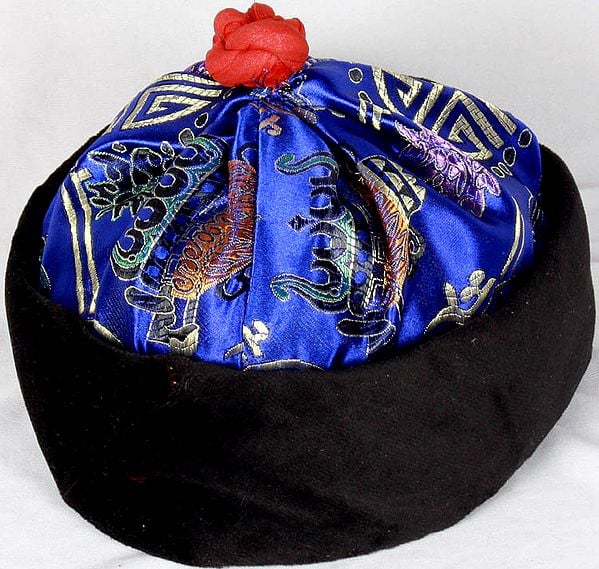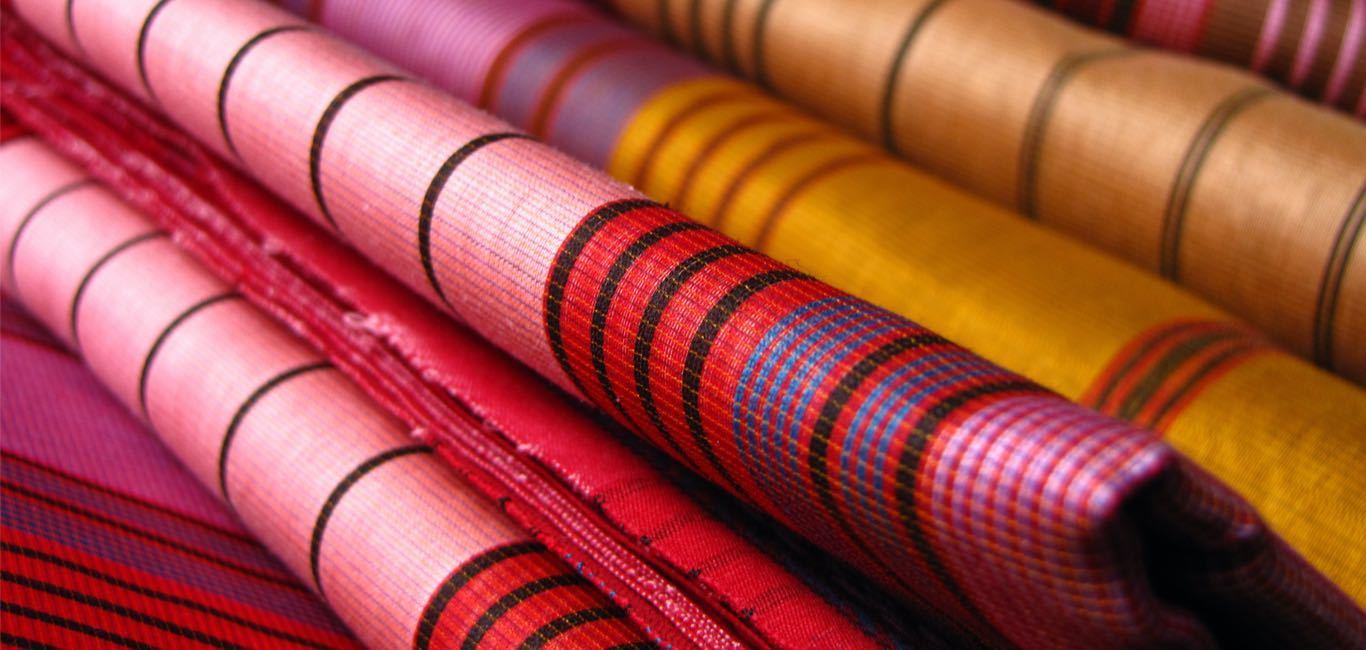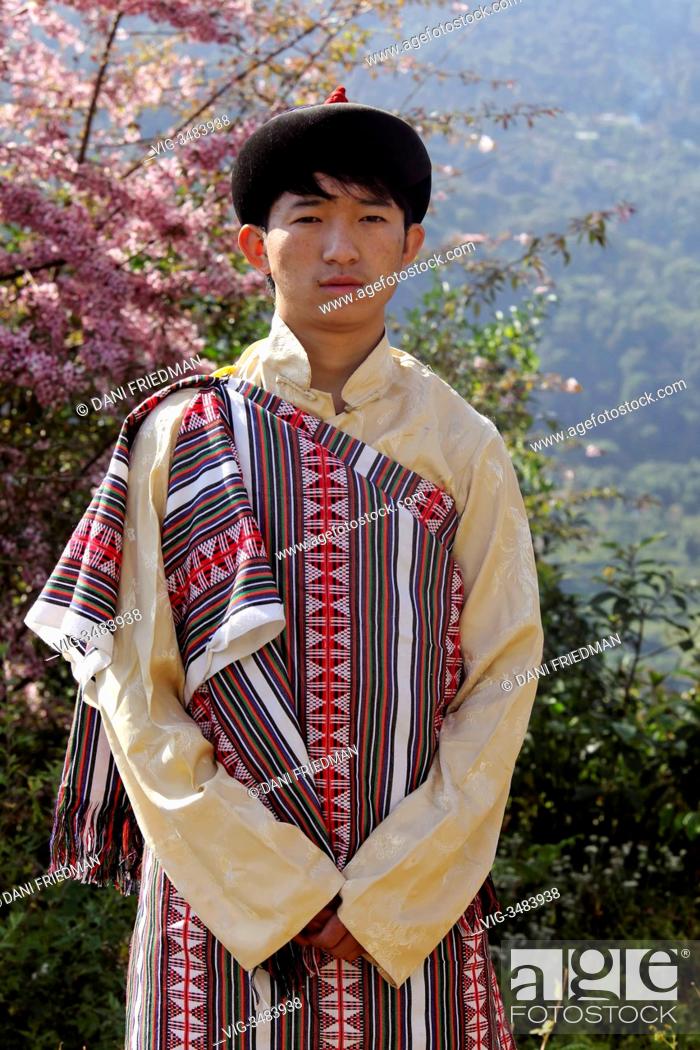
Weaving in Sikkim YouTube
Lepchā, people of eastern Nepal, western Bhutan, Sikkim state, and the Darjeeling district of West Bengal in India. They number about 46,000 (11,000 in India; 25,000 in Sikkim; and 10,000 in Bhutan).

the cover of an afghan weave, silk
Topic Handloom Weaving Arts & Crafts Sikkim Sikkim is the home of three distinct races --- the Lepchas, the Bhutias, and the Tsongs. Lepcha women folk work on traditional back-strap loin- looms. . The cloth woven by the women is used for women's traditional coat material.

Sikkimese Lepcha Cap Exotic India Art
Lepchas are the original inhabitants of Sikkim, India. The Lepchas are of mongoloid stock and some anthropologist trace their origins to Mongolia or Tibet. However, the Lepchas themselves have no such history of migration in their traditional knowledge.

Indigenous Lepcha Tribe Ancient art of weaving with selfsupported backstrap loom. / weaving
Lepcha-weaving is native to Sikkim and goes back to ancient times when the Lepcha's used yarn spun out of natural fibre - nettle, also known as sisnu, for Handloom weaving. The Lepcha weaves, locally known as thara are woven on back-strap loin loom and thus, results in a short fabric width.

Lepcha Dancers of Sikkim at the Hornbill Festival, Kisama, Nagaland Editorial Stock Photo
In Lepcha weaving of Sikkim, Lepcha weaves are characterized by intricate and colourful motifs patterned in stripes and woven on the back-strap loom. Now woven from yarns of cotton and wool, these were earlier made of nettle plant fibres and raw silk. Lepchas are a community indigenous to Sikkim, with a small population of about 75,000 spread.

Lepcha youth wearing traditional attire in a village in Melli, West Sikkim, India, Stock Photo
The idea of the vanishing Lepcha or Mutanchi rong,2 an ethnic community living on the southern side of the Himalayas in India (Sikkim and the Darjeeling District of West Bengal), Nepal (Ilam) and south-western Bhutan, has become widespread.

A young woman weaving fabric for a traditional Lepcha bag at the Cottage Industry in Gangtok
Biological Science Plant Sciences Bamboo Traditional Wisdom and Practices Involved in Bamboo Based Crafts of the Lepcha Community of North Sikkim - A Case Study from Dzongu Reserve Area.

Fabric Tour of Sikkim All About Lepcha YouTube
Sikkim Clicks on the pins to navigate Lepcha Weave, North Sikkim district The Lepchas are believed to be the original inhabitants of Sikkim and one of the three main communities of the state. In the past, the Lepchas used nettle fibre or Sisnu for weaving, but today the prevalent material is cotton.

[Lepcha women in traditional clothing in Singhik, Sikkim] LOC's Public Domain Archive Public
This Sikkimese girl is weaving Lepcha tribal weave cloth worn as a dress Contributor Names Kandell, Alice S., photographer Created / Published. Photograph shows two women weaving at a loom, Sikkim. Contributor: Kandell, Alice S. Date: 1965; Photo, Print, Drawing [Girl sitting in front of loom.

Bhutia Lepcha Tribe of Sikkim BHUTIA LEPCHA
Description: The Lepcha tribe of Sikkim traditionally used nettle yarn for weaving. Now, weaving is done mostly using wool for making colourful patterns of green, black, red etc. on a cotton base. Besides garments, bags and other accessories too are woven in the Lepcha or thara style, with a vertical loom. State: Sikkim Type: Weaving Partners

lepcha weaving Slide Set
HANDLOOM WEAVING In ancient times, the Lepcha's of Sikkim were said to use yarn spun out of stinging nettle (sisnu) plant to weave clothes.Today cotton and woollen yarn are used together with vegetable dyes and synthetic colours. Lepcha weaves or 'thara' is woven in vertical looms with a backstrap. Such looms are of small width.

Lepcha handloom of Sikkim Design Research
Sarah Faulkner K. R. Rama Mohan. The Lepchas, an ethnic group indigenous to the Himalayas and the Darjeeling hills, have been weaving textiles from local netle (Girardinia diversifolia) for millennia. However, their native land, centered around the former Kingdom of Sikkim in modern-day northeastern India, has been the site of centuries of.

Lepcha youth wearing traditional attire in a village in Melli, West Sikkim, India, Stock Photo
In Sikkim, we have Tshela Lizum Lepcha, a Gangtokian deeply committed to ethnic clothing as her individual quest of showing the world who the Lepchas are. The 35-year-old Rongmit has unfailingly draped her indigenous Dhumvon with pride and elegance for nearly one decade. The traditional Lepcha lady attire, in all its hues and colours, swish and.

4 handmade textiles of Northeast India find mention in UNESCO report 4 handmade textiles of
Fabric Tour of Sikkim | All About Lepcha All Play and Fun 6.25K subscribers Subscribe 14 Share 685 views 2 years ago Educational stuff This is a video explaining every important detail there is.

Bhutia Lepcha Tribe of Sikkim BHUTIA LEPCHA
The Lepchas, an ethnic group indigenous to the Himalayas and the Darjeeling hills, have been weaving textiles from local nettle (Girardinia diversifolia) for millennia. However, their native land, centered around the former Kingdom of Sikkim in modern-day northeastern India, has been the site of centuries of cultural exchange and colonization despite its remoteness, entailing wide-ranging and.

A young woman weaving a traditional Lepcha bag at the Cottage Industry in Gangtok, Sikkim, India
The Lepchas are an indigenous community, largely concentrated in Dzongu, a tribal reserve spread over 15,846 hectares of hilly terrain in the North Sikkim district of Sikkim with a population of approx. 7,000, along the Indo-China border. While they are also found in parts of Nepal, Bhutan and the Darjeeling hills, the largest number.